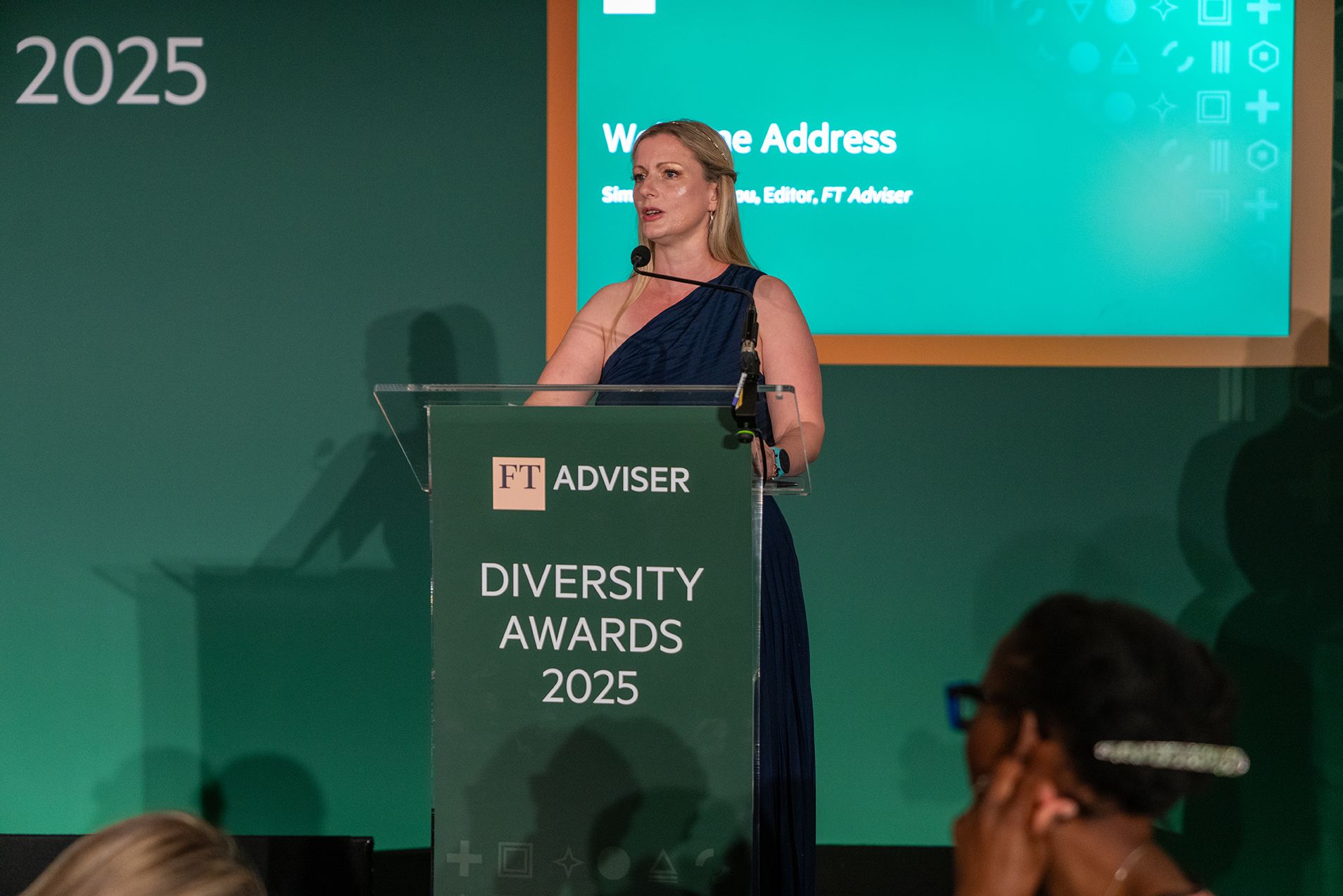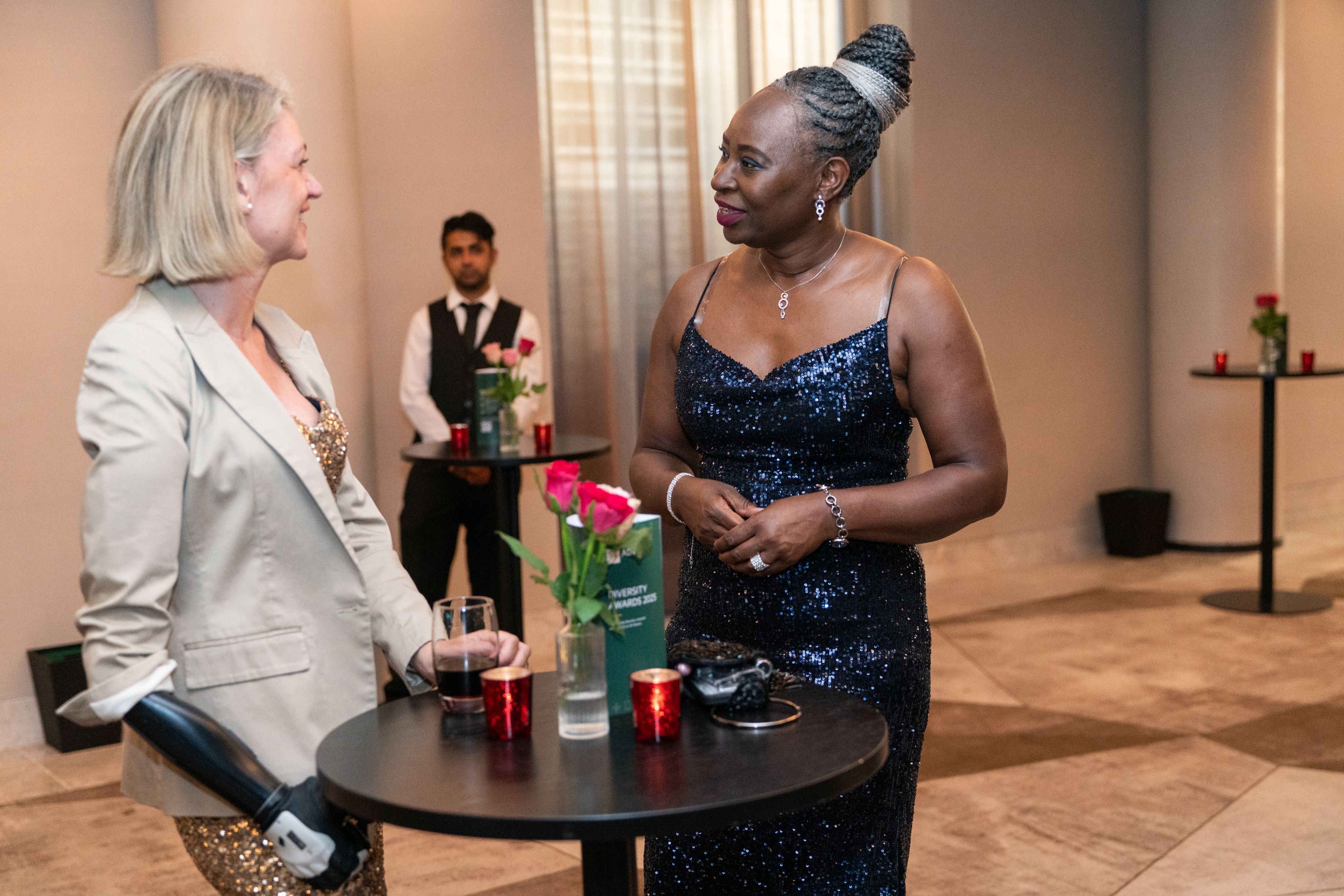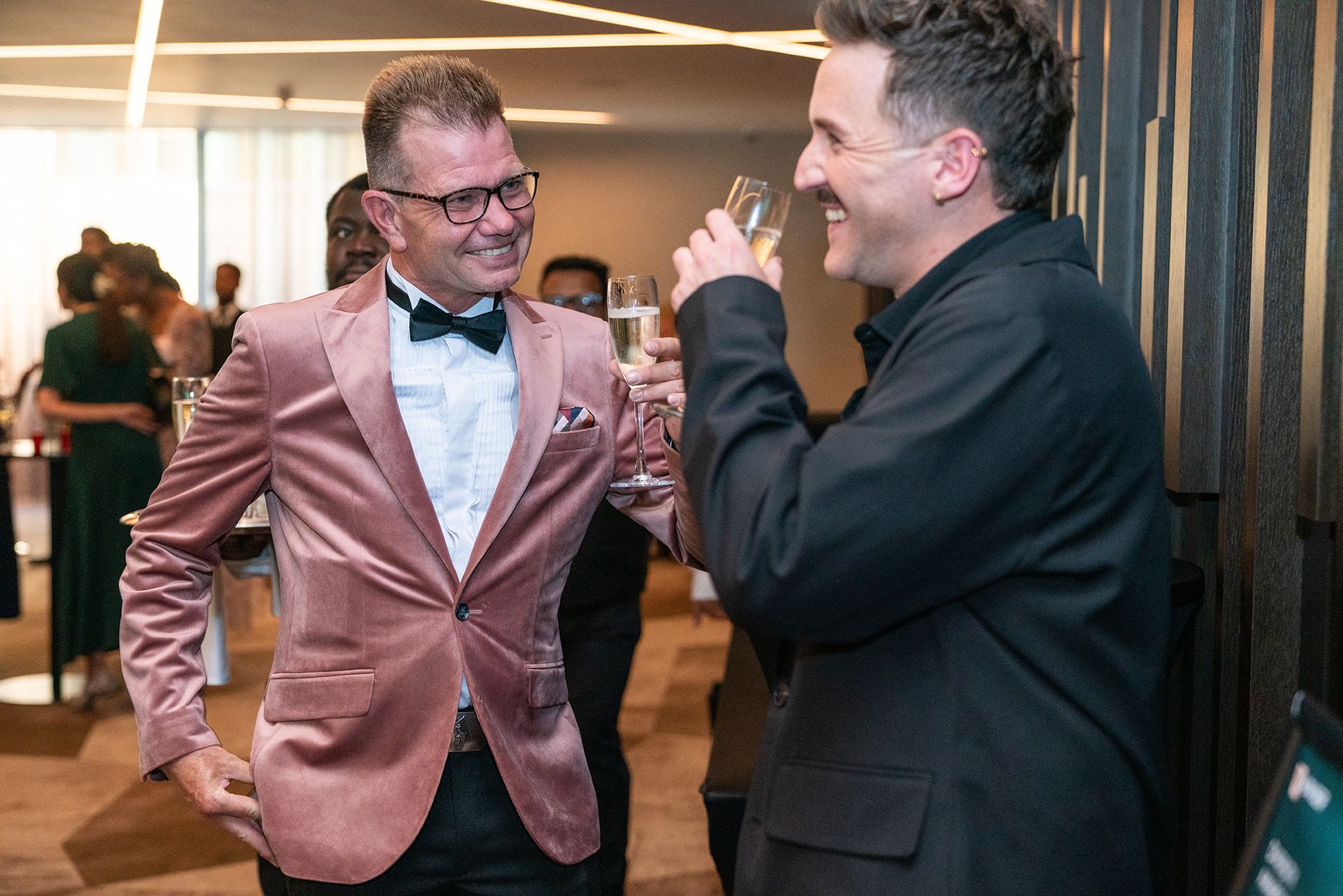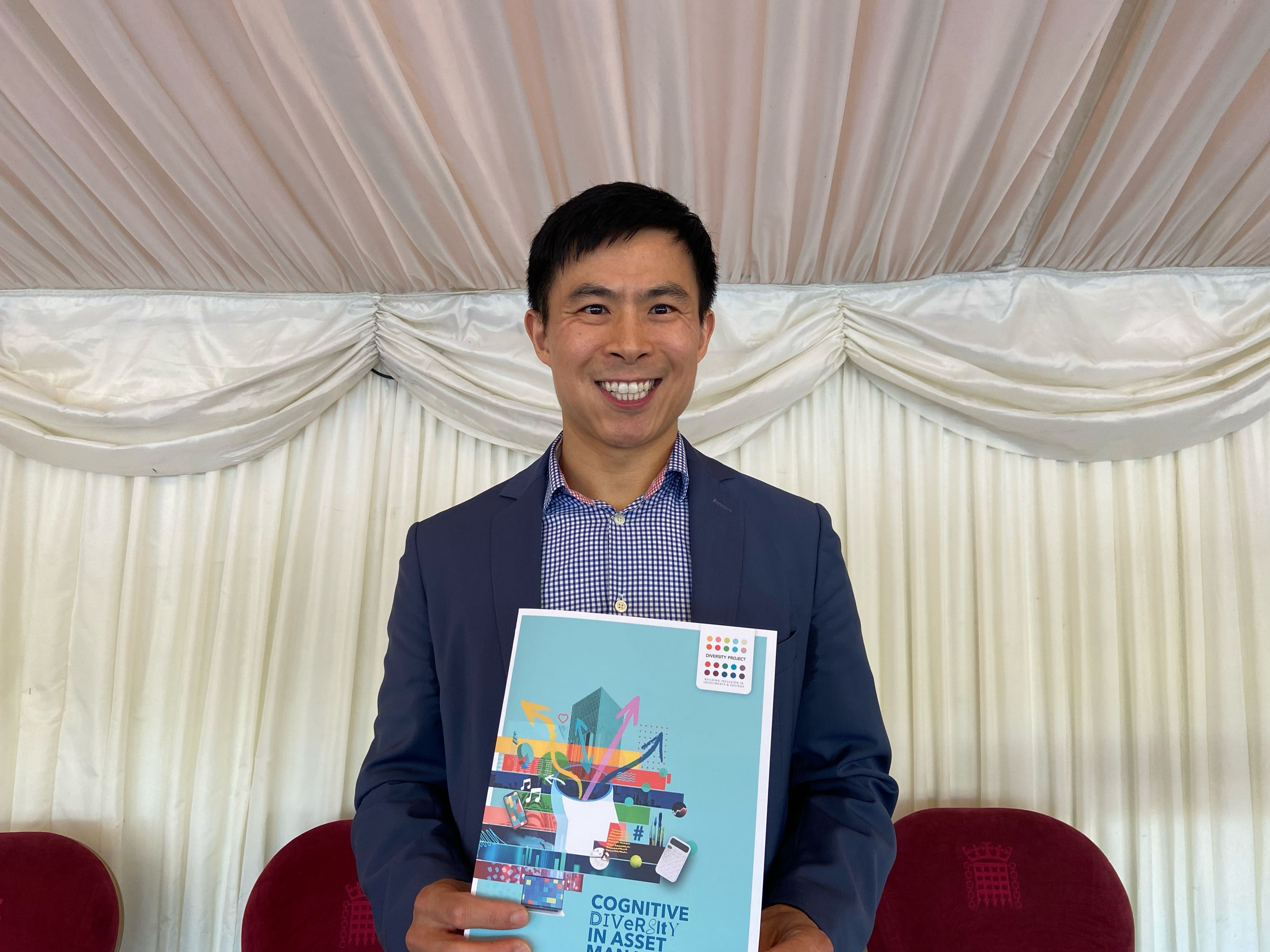FT Adviser Diversity Awards 2025
What this year's winners did to impress

Companies in financial services that have put diversity, equity and inclusion strategies into place during the past 12 months have seen significant, positive results for their businesses and clients.
The case studies submitted by all the candidates in this years' FT Adviser Diversity Awards testified to the strength of belief and dedication to DE&I among UK financial services businesses large and small.
This dedication and openness to celebrate their achievements in the field of DE&I comes at a time when such initiatives and strategies have ended up in the gunsights as political targets.
We only have to go online or read news stories to know that DE&I has been caught in the crossfire of public and political opinion, castigated as wasteful or destructive — but for all the companies that entered this year's awards, we know this is not so.
We have seen companies increase their staff retention figures, improve their community outreach, deliver support to schools, drive social mobility programmes that bring more talent into financial services and improve their gender pay and personnel gaps.
These companies have gone from strength to financial strength during the past year, demonstrating that a commitment to DE&I comes with a commitment to delivering the best consumer outcomes for clients.
Changes
Recognising the importance of showcasing the great work done across all types of financial services companies, FT Adviser broadened the scope of the awards this year.
For the first time in the awards' seven-year history, we have created bespoke categories for financial advisers, so that planners and advisers can highlight their achievements more clearly among their peers.
We were excited to see how many small advice companies took part this year, and to read their case studies.
The judges were impressed at the work done among small firms, proving that you do not need to be a massive organisation with a huge budget and HR department to drive positive change.
Also this year we have created a new category, "Championing Veterans' Inclusion" to shine a light on the companies that are making strides to help the thousands of ex-service personnel who enter Civvy Street with little financial support and few job prospects.
What the judges look for
As ever, the high quality of the submissions meant there were difficult decisions for our panel of expert judges.
Our judges — who you can meet towards the end of this report — looked for those strategies that came as a result of clear, long-term thinking that cut across — and through — the whole organisation.
Impactful initiatives, strategy, long-term vision and a deep understanding built from months — if not years — of research into a company's workforce and client base are the four core elements of all the shortlisted entries.
Those who won or were highly commended were able to demonstrate clearly the reasoning behind their actions, and could quantify the positive progress those actions have made during the past 12 months, for colleagues, clients and their communities.
You can read some of their case studies in this report.
And those winners celebrated in style — as you can see from our exclusive highlights video below:
CPD: How to demonstrate the 'inclusion' in DE&I

Advocating for better strategies and initiatives in diversity, equity and inclusion is everybody's job.
Whether it is supporting colleagues during Pride Month or helping fundraise for a community outreach programme; attending training on spotting micro-aggressions or implementing small changes to make the office more neurodivergent-friendly, everyone has a role to play in making the workplace a more inclusive and supportive place.
Many companies will have some form of DE&I initiatives in place; most will claim to have inclusive cultures. All companies are required by law to implement equal rights and equal treatment.
But not all companies get it right when it comes to implementing proper DE&I strategies. And much of this is because they do not have strategies — only sporadic initiatives that they throw money at, or make it the responsibility of one or two people.
This means DE&I does not permeate the whole company culture, does not feed through to better colleague experiences, does not filter through to better client outcomes and does not lead to greater community impact.
When that happens, it is all too easy for DE&I naysayers to point the finger and claim that "it doesn't work".
We have all seen the social media backlash when DE&I gets it wrong, and we have read stories about the actions of anti-DE&I factions in governments across the world.
It was noted that many US companies, for example, did not change their logos to reflect Pride Month this year.
Newsweek in the US reported: "A number of blue-chip corporations and sports organisations are quietly scaling back their public-facing support for LGBTQ+ Pride Month in 2025.
"About 39 per cent of corporate executives say their companies are reducing public Pride efforts this year, according to a recent survey from Gravity Research. That includes less frequent use of rainbow-themed logos, fewer social media posts and scaled-back sponsorships of Pride events."
And yet international workplace consultancy Amazing Workplaces, which provides assessment and certification for companies aiming to follow the best practices in people management, posted: "What if inclusion isn't just the right thing, but the smartest business move?"
For example, a 2022 study by consultancy McKinsey said institutional investors showed a strong preference toward more diverse deal teams when allocating capital to private equity firms.
It said: "Chief investment officers of leading institutional investors said they would allocate twice as much capital to the more gender diverse PE firm if choosing between two otherwise comparable firms."
More ethnically and racially diverse PE deal teams would receive 2.6 times as much capital, the study suggested.
This is, of course, simply a snapshot of one tiny aspect of the whole financial services world. Nevertheless, business strength should be the ultimate goal for employers when it comes to any DE&I mandate.
Bridging the gap between awareness and action isn't just good practice — it is essential for business growth.
But companies need to do DE&I well in order to achieve that growth, not just hire people to tick a box.
This means that, to achieve business strength through diversity, companies need to put their money where their mouth is and think hard about what their DE&I strategy is, and how it will help them fuel their ambitions.
Peter Hamilton, head of market engagement for Zurich, says: "The concept of DE&I isn’t without its critics, and of course some of these voices have been more strident in recent months.
"It can certainly take time and effort and, sometimes, money. From a Zurich perspective, we believe we have absolutely benefited by engaging strategically in DEI — an awareness of cultural differences and similarities can bring employees, customers and communities together."
According to Hamilton, when DE&I is done well, and when inclusion is a core part of a company's long-term business strategy, it reaps its own rewards.
He says: "It adds new insights to the way we work, the propositions we develop and ultimately how we interact with our customers and within our communities."
Good, effective DE&I strategies must therefore help an organisation to develop and grow, providing better services for clients and stakeholders, not simply give it new logos to put on social media channels different months of the year.
In particular, the focus on inclusion is key: not just hiring diversely or mandating equal pay, progression and promotions, but also making sure employees feel included.
There are many ways companies large and small achieve this inclusion, but this feature will focus on just two: space to speak and room to breathe.
Space to speak
One important practice for any company considering how to do DE&I well is to create nurturing and encouraging workplaces that not only hire people from diverse backgrounds but encourage them to talk and share their ideas without fear of ridicule or dismissive attitudes.
Such workplaces provide all employees with psychological safety: encouraging them to speak up in meetings, allowing staff to be their authentic selves at work, eradicating micro-aggressions and providing physical areas for people, particularly neurodivergent individuals, to decompress.
Creating positive workplaces and providing psychological safety is particularly important if companies truly want to have the benefits that cognitive diversity can bring.
But what is cognitive diversity?
In June, the Diversity Project unveiled the findings of a year-long study, led by Alex Edmans, professor of finance at the London Business School.
During an afternoon conference at the House of Lords, Edmans told attendees: "Cognitive diversity is the range of expertise, experience, perspectives, preferences, traits and ways of thinking within a team."
It can arise from differences in educational background, professional background, life background, cognitive style or personality and demographics.
Having canvassed the views of financial services practitioners across the UK, the findings showed that asset management companies that developed and encouraged cognitive diversity at all levels, within all teams, were able to create "substantial value".
It can certainly take time and effort and, sometimes, money.
In particular, this is seen not just in the generation of ideas from people of all backgrounds and experiences, but in how well the company is able to encourage the sharing of ideas, implement effective strategies for putting these ideas into action and demonstrating the effectiveness of those ideas.
Ways to do this include:
- Letting junior team members chair meetings on occasion.
- Providing an agenda beforehand.
- Allowing team members to provide contributions to the meeting in written form if they are uncomfortable speaking out.
- Acting to prevent one or two people hogging the meeting, by inviting other voices.
- Having at the outset an expectation that people should come with an 'alternative view' about items on the agenda.
- Asking colleagues to deliver a short commentary on their latest work.
- Providing presentation and public-speaking training.
However, there are obstacles to always pushing cognitive diversity.
The report said managers should also consider whether teams are effective enough in being able to accept and reject different ideas, or whether people end up agreeing with the status quo because a certain individual or set of individuals happen to be of a similar background to them.
There is also the possibility that team members simply agree with an idea — even if it is a bad one — because the person suggesting it is too well respected or seen as too much of an authority figure.
The latter point, delegates heard, presents challenges to employers in how to train people to share and receive different opinions.
Are teams able to debate different ideas respectfully? Do they tend to accept the ideas of people who are like them? Do teams get overwhelmed by too many different ideas, leading to inaction? How are good ideas implemented in a timely fashion?
Edmans said: "Effective leadership is important to ensure the benefits of cognitive diversity outweigh the cons.
"The prize is a competitive advantage through better decision-making, and this is well worth the effort."
Room to breathe
Apart from hiring diversely to encourage cognitive diversity and allowing people the space to speak up, companies can also do more to provide physical environments that truly help with inclusion.
Jane Hulme, HR director at Unum UK, says: "Businesses that prioritise accessible, individualised and comprehensive support for employees will benefit from healthier, happier and more engaged employees."
This support does not have to include redesigning the whole office to create a sensory map of the workplace — although insurer Zurich does just that, making sure there are quiet areas or low-lighting areas for individuals who are neurodivergent or who are prone to migraines.
It can be as simple as asking colleagues if they have any reasonable adjustments to help them work better within the office space.
For example, one fundraiser disclosed to a charity employer that she would prefer to be in a desk away from a glass window that looked out into a wider office, as being "on display" made her feel uncomfortable and triggered episodes of paranoia. A simple request to sit further away made all the difference to her days working in the office.
Another example: people with ADHD may prefer not to work in an area of the office that is a thoroughfare — it can be distracting to have colleagues walking past continually.
Employers wanting to hire diversely — and anyone with diverse clients coming into the office space for meetings — must therefore take time to consider whether the building and facilities themselves are suitable for all.
This means that hiring managers need to consider reasonable adjustments to make the workplace accessible and inclusive, and work with facilities managers (or whoever the responsible person is) to ensure clients and colleagues alike can access and move within the building comfortably and safely.
The Institute of Government and Public Policy states: "A key component of a disability-friendly workplace is physical accessibility."
For example:
- Are desks suitable for people in wheelchairs?
- Are computers pre-set with speech technology for the visually impaired?
- Are work areas right underneath harsh lighting, or near kitchens with strong food smells?
- Are there inclusive toilets available, as well as same-sex ones, to allow for choice?
- Are meetings hybrid or in-person only?
- Is there a disabled bay for parking?
- Are lifts and doorways wheelchair accessible?
- Are common areas such as restrooms and break rooms designed with accessibility in mind?
Providing physical safety as well as psychological safety make for strongly inclusive workplaces, and inclusive workplaces lend themselves well to progressive, forward-thinking companies that are able to do things differently from their peers with a long-term business goal in mind.
Hulme adds: "By equipping managers to proactively address concerns, signpost to help available and encourage individuals to take care of themselves through open communication, businesses ensure that every employee — no matter where they work — has the support and resources they need to thrive."
Top-down, bottom-up
As most training will tell you, inclusivity is everyone's responsibility, and every small step forward is a positive one, but it absolutely helps to have support and the involvement of the company leaders.
Zurich's Hamilton adds: There are big and small things that can make a difference. It’s important to have a strategic sense of vision and direction. For example, our inclusion council is chaired by our chief executive."
Having DE&I champions at the top of the corporate chain makes for a strong, business-centric strategy.
However, this strategy, and how the executives wish it to be put into action, needs to be communicated well.
This communication needs to be clear and engage every colleague in the vision — or it simply will not work.
Mandatory training can only go so far: there have to be frequent check-in points and updates so all staff are encouraged to get on board with the vision.
Moreover, companies that are determined to show how their DE&I strategies actively improve business performance must make sure external agencies are also aware of the vision and the steps they are taking to achieve that.
The prize is a competitive advantage through better decision-making, and this is well worth the effort.
This can be in the form of clear shareholder results documents, press reports, social media coverage and allowing open communication with clients and members of the local community.
Hamilton adds: "At a more tactical, but still important level, our annual pay gap reports set out tangible next steps, but also make them visible to the broader public, and this year, for the first time, we’ve added our social mobility pay gap."
Good communication with all stakeholders — internal and external — is a vital component in a company's journey to becoming truly inclusive, but that path to inclusivity leads back to the bottom line.
Hulme says: "Businesses that take the lead in supporting employee mental health will not only boost their team’s wellbeing but also build resilient, productive workforces.
"Bridging the gap between awareness and action isn't just good practice — it is essential for business growth."
Peter Hamilton of Zurich, photographed by St Paul's Cathedral, London, on the FT Head Office rooftop. Credit: Carmen Reichman/FT Adviser
Peter Hamilton of Zurich, photographed by St Paul's Cathedral, London, on the FT Head Office rooftop. Credit: Carmen Reichman/FT Adviser
Professor Alex Edmans of the London Business School, author of the Diversity Project's Cognitive Diversity In Asset Management Report 2025
Professor Alex Edmans of the London Business School, author of the Diversity Project's Cognitive Diversity In Asset Management Report 2025
Congratulations once again to all our winners!

Meet the Judges

Who was on this year's judging team?
CPD: How to demonstrate the 'inclusion' in DE&I
Click on the link above to bank your CPD from reading this special report




















